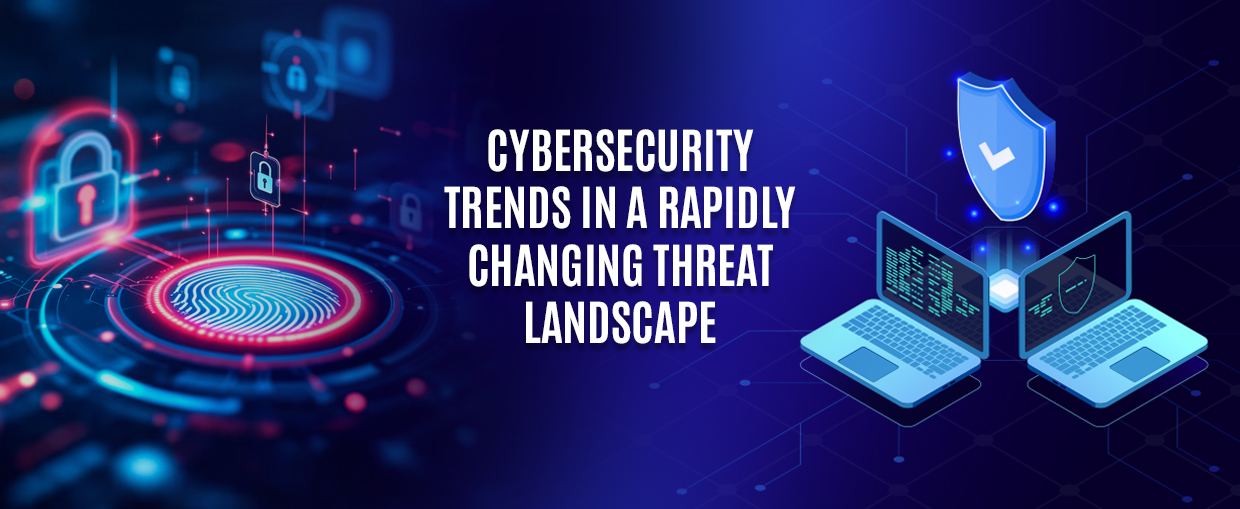In an effort to close the gap between online and offline stores, augmented reality (AR) has evolved to a new level. Even while mobile applications were already using technology to transform retail operations, the introduction of augmented reality has started a new wave of innovation in how people engage with products.
Real-world product visualization is now made possible via augmented reality (AR) in retail, where buyers can engage with products on a more personal level than they could with static images on websites. By providing an immersive experience, firms can provide interactive product representation to customers. This blog will thoroughly examine the revolutionary effects of Augmented Reality in retail. We’ll go in-depth into the drawbacks of conventional retail marketing and go over the advantages and use cases of implementing augmented reality in retail.
Understanding Augmented Reality in Retail
Through the seamless blending of the real and virtual worlds, augmented reality (AR) presents digital information and images in a real-life environment. In short, augmented reality (AR) allows users to project digital things into the real world. The use of augmented reality in retail refers to the incorporation of this technology into the in-store and online retail shopping experiences.
This dynamic fusion of digital and physical environments enriches user experiences, offering valuable context and insights. Thus it offers innovative ways to visualize and interact with information, transforming how customers engage with products and brands.
Why Is Augmented Reality in Retail Important?
With the quick pace at which technology is developing, it can be challenging to stay up. However, your consumers are the ones staying ahead of the curve. Augmented reality is revolutionizing shopping experiences, both in-store and online. Falling behind in adopting this technology means losing customers to competitors who are already embracing it.
Customers now have options to make quicker, wiser, and more assured selections via virtual try-ons, completely customizable items, and real-time product viewing in any location. Not only can augmented reality increase customer engagement and conversions in retail settings, but it also demonstrates your commitment to innovation and helps in delivering optimal customer experiences.
The Drawbacks of Traditional Retail Marketing
Traditional marketing methods required an update as technological advancements and the demand for goods increased. Retail stores expanded, customer traffic surged, and systems became more organized. Here are some key challenges associated with this evolution:
Limited Stock Availability
A common limitation in traditional retail is finding items out of stock, a fact you often don’t discover until you visit the store. This issue persists regardless of external factors, posing a continual challenge for businesses with limited resources and potential stockpiling issues.
Lack of Personalization
A significant challenge in traditional retail marketing is delivering personalized messages tailored to individual consumer behaviors and preferences. Conventional marketing methods often fail to meet the level of personalization that modern consumers expect, reducing the effectiveness of messaging.
Top 11 Benefits of Augmented Reality in Retail
Augmented Reality has had a monumental impact on the retail industry, bringing numerous benefits. By streamlining processes and enhancing both online and offline shopping experiences, AR has transformed the retail landscape. Here are the key benefits of augmented reality that consumers have commonly observed in retail shopping.
1. Personalized User Content
Retailers frequently tailor content to align with customer expectations. You might notice retail stores filtering content to help you find relevant items quickly. Additionally, Virtual Reality (VR) is used to enhance these experiences. Combined, these technologies offer comprehensive AR and VR solutions in the retail sector.
2. Convenience of Trials/Tryouts
Waiting outside the trial rooms for your turn can be tedious and take a lot of time. As a result, there are virtual mirrors where you can easily discover the dress size you desire and view how that clothing fits and looks on a digital screen.
This is an excellent example of how augmented reality has changed retail. In order to position the glasses on your virtual reflection while you shop for them, the app will scan your face. Retail sales are greatly influenced by these kinds of gamification approaches.
3. Blending Traditional Retail and Online Shopping
Shopping is often seen as an enjoyable activity, yet with numerous stores and a large population, finding the right items can sometimes be overwhelming. One of the significant advantages of integrating AR into eCommerce development strategies is that it recreates the enjoyable aspects of traditional shopping without inventory costs and long queues.
4. Engaging Shoppers with Printed Content
Printed products remain crucial in marketing and are a cornerstone of augmented reality marketing strategies. By simply holding your phone over a picture, you can access related information and discover similar items of interest, illustrating the power of augmented reality in retail applications. Many companies have already embraced this technology to enhance customer engagement and shopping experiences.
5. Enhancing Brand Visibility and Awareness
Augmented reality (AR) is an exceptional tool for expanding a company’s brand presence across broader audiences. Integrating cutting-edge AR features into mobile apps enables brands to offer unique user experiences. By incorporating AR into retail marketing strategies, brands gain significant leverage to innovate interactions, facilitating instant feedback loops.
6. Breaking Language Barriers
Despite the myriad languages spoken worldwide, barriers are becoming increasingly temporary. Google Translate’s AR mode, for instance, allows you to view 40 foreign languages as if they were your own. AR-based shopping apps utilize region-specific language features, with the help of AR and AI tools, to enhance service understanding. Even printed catalogs now integrate AR content, enabling users to select their preferred language effortlessly.
7. Maximizing ROI
Augmented reality (AR) is a dynamic technology that evolves rapidly. eCommerce and mCommerce retailers leveraging AR capabilities often achieve significantly higher returns on investment compared to their non-AR counterparts. The integration of AR has become a crucial trend in the retail sector. Nowadays, developing an AR app is both easy and cost-effective.
8. Enhancing the Retail Experience
To cultivate customer loyalty and encourage repeat visits, retailers should focus on delivering highly interactive shopping experiences, both online and offline. Integrating advanced in-store features such as digital and virtual mirrors elevates the overall customer journey, promoting engagement and satisfaction. Continual advancements in these technologies provide a competitive advantage, helping to attract and retain customers over time.
9. Gathering Customer Preferences Data
In retail, augmented reality (AR) makes it easier to gather consumer preference data. With the help of this technology, companies can create engaging and tailored experiences for their customers while learning important details about their preferences, behaviors, and purchase habits. By analyzing the data produced by augmented reality interactions, retailers can make effective, well-informed judgments.
10. Reduces Refunding and Returns
eCommerce’s surge has brought higher return rates compared to brick-and-mortar stores. According to Invesp, online-ordered products have a return rate of 30%, whereas brick-and-mortar stores experience a return rate of 8.89%.
Analyzing reasons like size and fit discrepancies, inaccurate product descriptions, and gift returns is crucial. Businesses can leverage returns to build customer loyalty by offering sizing charts, product reviews, exchange options, and understanding return reasons. Integrating AR allows virtual product try-ons, reducing logistics costs and turning return challenges into opportunities for stronger customer relationships.
11. Mitigating Hygiene Concerns
As concerns over direct product interaction evolve, online sales have surged. AR shopping experiences now provide virtual alternatives to in-store visits, closely resembling real-life shopping. Brick-and-mortar stores have adopted AR marketing strategies such as “Try On” and “Try Out” features, reducing the necessity for direct product handling. AR integration in the retail sector aligns with evolving preferences for minimized physical interaction.
Augmented Reality in Retail: Use Cases
Virtual Shopping
Augmented reality (AR) has gained immense popularity among young users on social platforms such as Snapchat and Instagram. This technology allows consumers to digitally overlay clothing, accessories, and images onto themselves in real time, transforming the shopping experience into a virtual realm.
Retail giants like Ray-Ban, Nike, Kendra Scott, and recently Amazon have successfully leveraged AR-powered virtual try-on features, driving significant engagement and sales. Recently, Snapchat made headlines by offering free access to its AR shopping technology, aiming to democratize AR adoption among retailers of all sizes. Major brands like Apple and IKEA have utilized AR to visualize how their products fit into customers’ homes before purchase, enhancing the online shopping experience. Shopify AR empowers retailers to upload 3D models and connect them with their products, delivering immersive AR shopping experiences to customers.
Virtual Navigation
In addition to guiding customers through traditional retail settings, augmented reality navigation systems can display more details about physical products straight on a user’s smartphone. These days, consumers can locate the things they want in even the biggest department stores and malls with ease.
In-Store Displays
In four out of ten stores that a typical customer visits, they make three unplanned purchases. In light of this, one of the greatest ways to engage potential customers and raise brand awareness is through augmented reality windows and digital in-store displays. Most notably, these address a long-standing issue of the majority of OOH campaigns: the inability to gauge their level of success.
These augmented reality displays not only offer consumers engaging new ways to interact with ads, but they can also track and record real-time analytic data. Furthermore, augmented reality displays are dynamic and can be modified to iterate based on data gathered over time, in contrast to static billboards and bus advertisements.
PacSun launched a spring-summer ’22 campaign featuring Emma Chamberlain, centered around augmented reality (AR). A prominent highlight of the campaign was an innovative window-shattering, wave-crashing AR storefront video display at the brand’s flagship store in Soho, New York. Eye-catching visuals naturally attract humans. Window displays not only capture their attention but also help them visualize how products will appear on themselves or in their homes.
Virtual Fitting Rooms
Just like mobile AR try-on experiences, virtual fitting rooms enable shoppers to try on items virtually without physically handling them. This technology also enables retailers to showcase items not currently in stock, offering the convenience of direct shipping to shoppers’ doors. Leading retailers such as Ralph Lauren, Adidas, Nordstrom, and Macy’s have integrated virtual fitting rooms into their physical stores, enhancing shopping choices and boosting conversion rates while decreasing returns.
Exploring the Future of AR in Retail
The retail industry, which is always welcoming new innovations and is one of the early adopters of the latest launches, soon started using AR to provide unique experiences to their customers and also for marketing purposes. The growth of AR in the retail industry since then has been gradual and highly impressive. The projections from Allied Market Research suggest a CAGR of 41.4% for AR in retail.
In the near future, augmented reality will undoubtedly raise the bar for personalization, customer experience (CX), and interaction with retail companies. These days, “retail” is not just a buzzword; it is an obvious fact. It won’t take long for traditional retail to completely give way to AR-powered retail, given how quickly augmented reality is being used in eCommerce. As a reliable and captivating immersive technology, augmented reality also performs best within brick-and-mortar establishments.
Retailers who swiftly adopt this technology are set for a bright future.
To Sum Up
Augmented reality is anticipated to shift from a luxury to a necessity in retail, particularly with the progression of high-quality virtual try-on capabilities. As consumer interest in AR grows and its potential becomes clear, retailers will increasingly adopt this technology in both their new initiatives and existing strategies.
Retailers looking to revolutionize their shopping experiences with AR should consider collaborating with an experienced software development company. Their app development services will enable retailers to create AR applications that offer personalized and engaging shopping experiences. Ensuring seamless AR functionality in retail applications requires the expertise of QA consulting services, which help maintain high standards of performance and reliability. To fully harness the potential of augmented reality in retail, businesses must hire developers who are proficient in the latest AR technologies and trends. Have any queries? Feel free to contact us!









